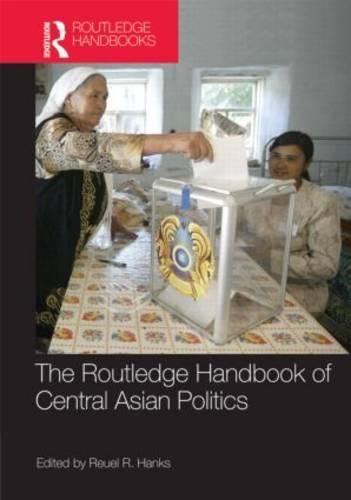Readings Newsletter
Become a Readings Member to make your shopping experience even easier.
Sign in or sign up for free!
You’re not far away from qualifying for FREE standard shipping within Australia
You’ve qualified for FREE standard shipping within Australia
The cart is loading…






Since achieving independence in 1991, the five states of Central Asia have increasingly gained geopolitical, economic and strategic significance. There are several reasons for the region’s rise in importance. Geographic location, at the intersection of Russia, South Asia, China and the Middle East, gives Central Asia a crucial role in the relationships between all these key regions. The Central Asian countries clearly recognize their new role in the world, and in the last decade have entered into strategic alliances. The impact of the region on the global energy supply and markets, due to some countries holding potentially vast pools of oil and natural gas, is well documented, and the forward positioning of armed forces by the United States and Russia in Central Asia highlight the strategic dimension in the war on terror.
The time period covered in the Handbook is contemporary, with a focus on the dynamics and causes behind current issues in the region. Central Asia here centres on the five former Soviet republics of Kazakhstan, Uzbekistan, Tajikistan, Kyrgyzstan and Turkmenistan. The book is structured around four general themes, which contain topically-focused chapters addressing the crucial components of each theme, across the five Central Asian states. This academic Handbook, produced by experts on the region’s complex politics, fill a void in the existing litereature. It is much needed to provide an in depth understanding of political issues in Central Asia.
$9.00 standard shipping within Australia
FREE standard shipping within Australia for orders over $100.00
Express & International shipping calculated at checkout
Since achieving independence in 1991, the five states of Central Asia have increasingly gained geopolitical, economic and strategic significance. There are several reasons for the region’s rise in importance. Geographic location, at the intersection of Russia, South Asia, China and the Middle East, gives Central Asia a crucial role in the relationships between all these key regions. The Central Asian countries clearly recognize their new role in the world, and in the last decade have entered into strategic alliances. The impact of the region on the global energy supply and markets, due to some countries holding potentially vast pools of oil and natural gas, is well documented, and the forward positioning of armed forces by the United States and Russia in Central Asia highlight the strategic dimension in the war on terror.
The time period covered in the Handbook is contemporary, with a focus on the dynamics and causes behind current issues in the region. Central Asia here centres on the five former Soviet republics of Kazakhstan, Uzbekistan, Tajikistan, Kyrgyzstan and Turkmenistan. The book is structured around four general themes, which contain topically-focused chapters addressing the crucial components of each theme, across the five Central Asian states. This academic Handbook, produced by experts on the region’s complex politics, fill a void in the existing litereature. It is much needed to provide an in depth understanding of political issues in Central Asia.